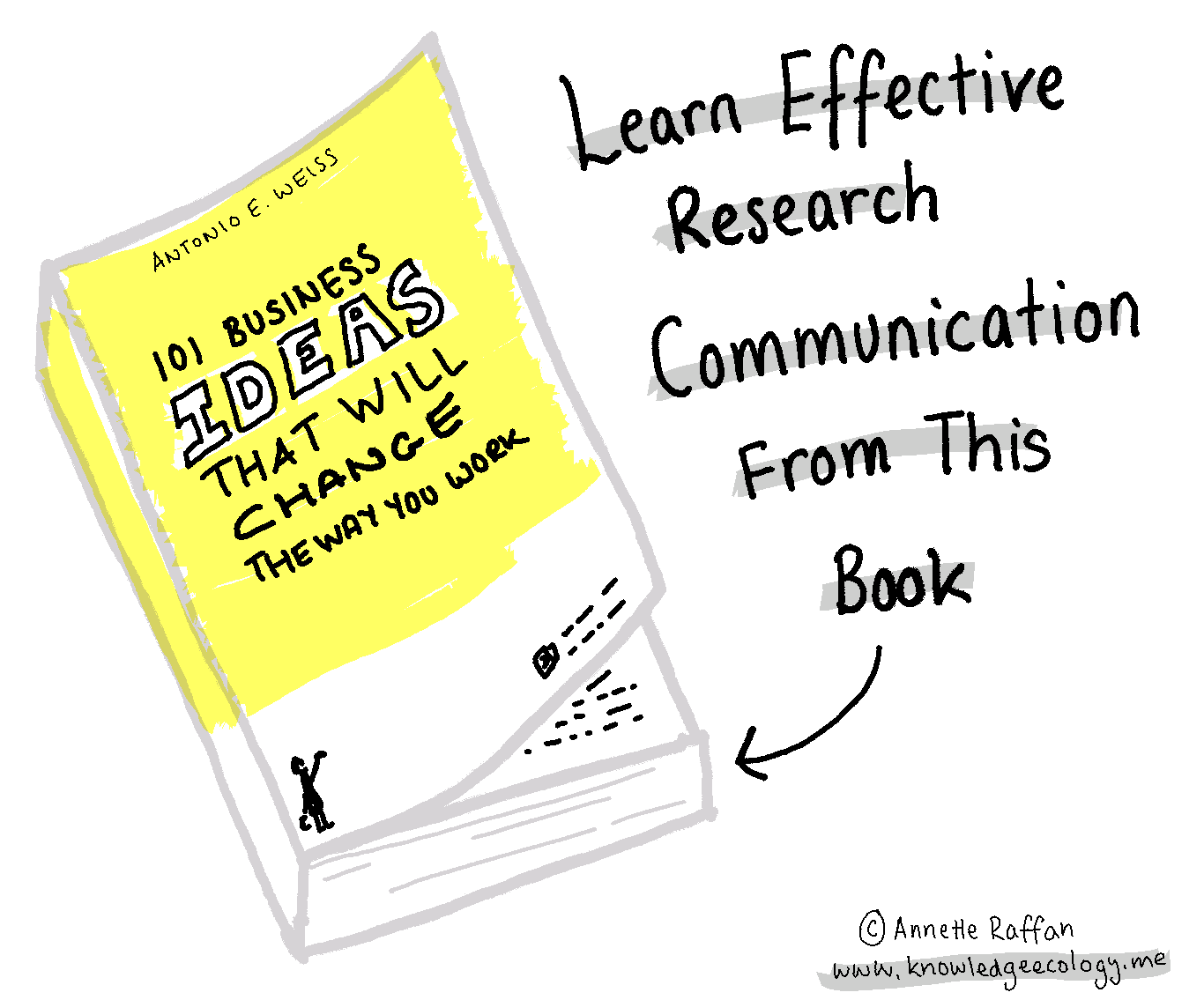Table of Contents
Scientific communication, particularly in peer-reviewed literature is littered with scientific jargon, excessive word use and confusing sentence structures.
Through this blog here on Medium and Ghost, I have spent a lot of time learning how to write more effectively. This post is in fact a second, hopefully improved iteration, of a previous one. Whilst practising writing is essential to improving your writing, another great way is by reading the work of others.
A book that really resonated with me with regards to research communication is "101 Business Ideas That Will Change the Way You Work" by Antonio E. Weiss. Now I read this a little while ago, but I decided to revisit the book as I re-write and edit, this post.
If you're looking for help to improve interpretation of scientific research work into bite-sized and understandable chunks then this book should be on your bucket list.
Not only does the book discuss over 100+ specific pieces of research within 300 pages, it also tells you why the chosen "Ideas" matter, and how you can apply them to your own work. In fact it literally tells you what to say to your co-workers if you are struggling to find the words!
Now whilst this book is aimed at business, because of the way it communicates research, there is a lot we can apply to our own communication practises as scientific authors
So sit back and enjoy as I review the book in the context of how we can use its writing style to improve communication of research.
First impressions are important
They say never to judge a book by its cover. I don't know about you, but I certainly do. The graphic design of the front page and words chosen for the back page all help me to determine the 'vibe' of a book. If they are dry and boring, I'm unlikely to read it.
Whilst the graphic design of a paper is largely up to your chosen journal, we have some control over the 'back cover'. Or in other words, the paper abstract. Although dry and boring may come as standard in the academic literature, it doesn't preclude good writing style, nor creating a clear and compelling abstract to hook your readers.
Weiss's book has a no-nonsense front cover utilising just three colours; yellow, black and white. Although this is no- nonsense, I found the cover a bit text heavy, and doesn't reflect the succinct nature of the writing style inside.
I'm going to assume it was the publisher's decision, but whoever it was, they chose to print one of the best book reviews on the back cover I have ever seen; "What fun. A box of chocolates for the managerial mind...". Combined with the rest of the blurb, there is ample evidence we are dealing with a guide written for busy business people to quickly absorb snippets of information, backed up by the scientific literature in an enjoyable way.
Research is merged with business advice in an easily digestible manner
The layout of the book is designed to give you a taster and digestion of interesting social and business research. Each idea is accompanied by a charming little comic-style picture, drawn by Mercedes León along with five consistent sections:
- "What you need to know"; what are the basics of the research
- "Why it matters"; why is it important that we know this information
- "How this will change the way you work"; how will knowing this information change the way we work or see things
- "What you might say about this"; how would you use this knowledge in conversation with others
- "Where you can find out more"; a reference or two including where the 'idea' came from
For example, accompanying "Idea #21; Take every email with a pinch of salt" we learn that people are more likely to lie in email than when using pen and paper. Ample, but not excessive detail to the main study discussed is provided. The methods and major findings are highlighted.
We then find out the results matter because email is now ubiquitous. Weiss suggests three things we can change before we hit send or read an email; understanding our motivations to use email rather than having a conversation, learning signs that the sender may be lying (such as increased emotionality and the lack of use of 'I') and, keeping track of conversations to check out anything you're unsure of.
You may then want to ask a colleague, or yourself, "Why did they put this to me in email rather than just tell me to my face?"
It ends with some links to the studies Weiss used to find out more. It's great to see the reference integrated into the book section, making the sections standalone.
All this information is expressed in just over two pages. It definitely feeds into the busy executive idea of a help-yourself-to-what-you-want-and-leave-what-you-don't kind of writing format; I'm going to call it the 'chocolate box approach'.

We can use a similar approach for scientific research communication
With a snappy heading, summary sentence, an amusing but simple sketch and these five headings, we have a clear idea of the subject, context and implications of the research. Here's how we can use this in an academic context, such as for a short blog, or paper outline:
- An interesting and snappy title; max 8 words.
- A short and catchy sub-title summing everything up into one sentence; max 20 words.
- A simple sketch in greyscale and one highlight colour; no drawing skills needed - stick people would be appropriate here. See the an image I've created for this post above.
- Fill out the five headings given above; about 500 words.
- All with only 2-3 references.
Why not use these as prompts to create a super simple academic profile page? These are a fantastic framework for an 'About Me' style of page. If you do, I'd love for you to leave a link down below, or send me an email and I'll check it out.
A word of note for effective communication though
Whilst 'Idea #21' was an interesting case study to present to you above, there is one slight flaw in its communication abilities; one of the papers they quote is hidden behind a paywall.
If you're communicating to a more general audience who may not have access to paywalled papers, it pays to only cite open access articles.









Comments